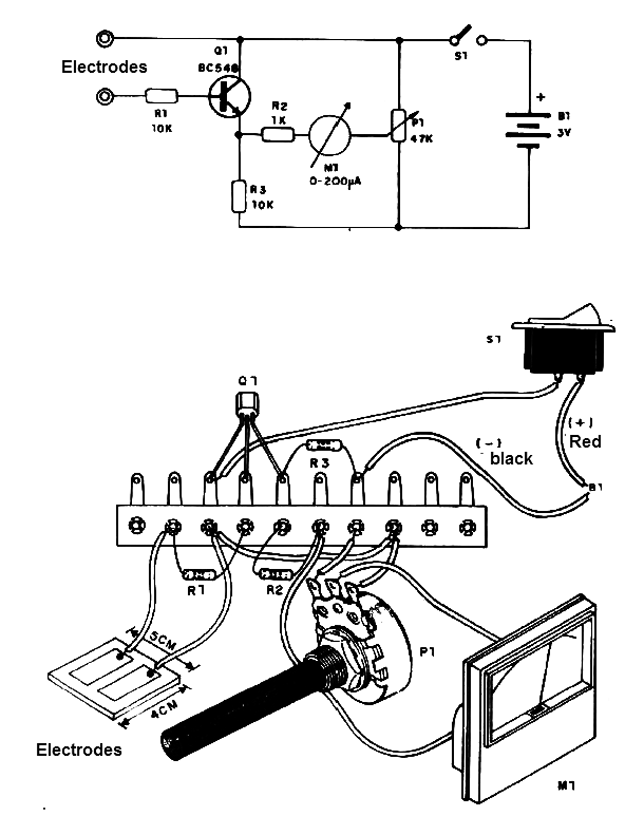This ultra-simple circuit detects imperceptible variations in skin resistance. With attention during an interrogation we can check if someone is lying or telling the truth.
Polygraphs, or lie detectors, work based on the small variations in skin resistance, indicated by an instrument, that occur when a person lies. Our circuit is very simple and sensitive, using a VU meter of 200 µA as a detector.
By adjusting the pointer to the middle, the scale at P1, when the respondent puts his/her fingers on the electrodes, we instruct this person to keep the pointer immobile by making the questions, needle movements may indicate that he/she is lying.
The circuit is powered by 3 volts and the VU and a stereo.
The electrodes consist of two metal plugs (tin or copper) that are attached to a wooden base.
When adjusting, if there is no equilibrium point in the middle of the scale, reduce the value of R2.
On assembly, observe the polarity of the batteries and the position of M1.

Q1 - BC548 - NPN general purpose transistor
M1 - VU - meter of 200 µA
P1 - 47 k - potentiometer
B1 - 3 V - 2 small batteries
R1 - 10k x 1/8 W - resistor (brown, black, orange)
R2 - 1k x 1/8 W - resistor (brown, black, red)
R3 - 10k x 1/8 W - resistor (brown, black, orange)
S1 - Single switch
Miscellaneous:
A support for two alkaline batteries, terminal strip, wires, welding, etc.